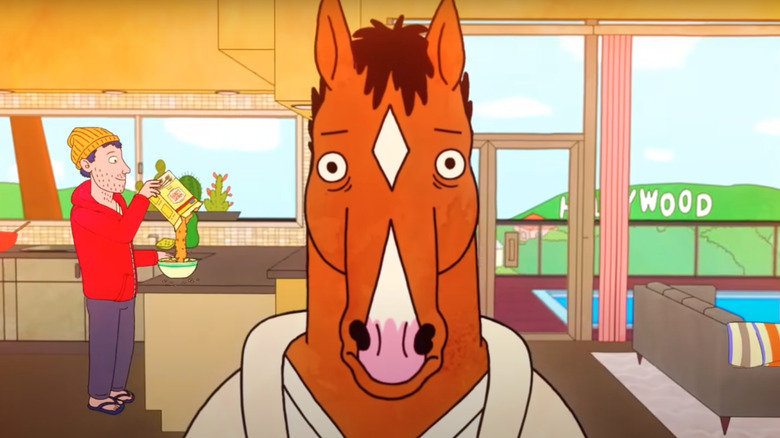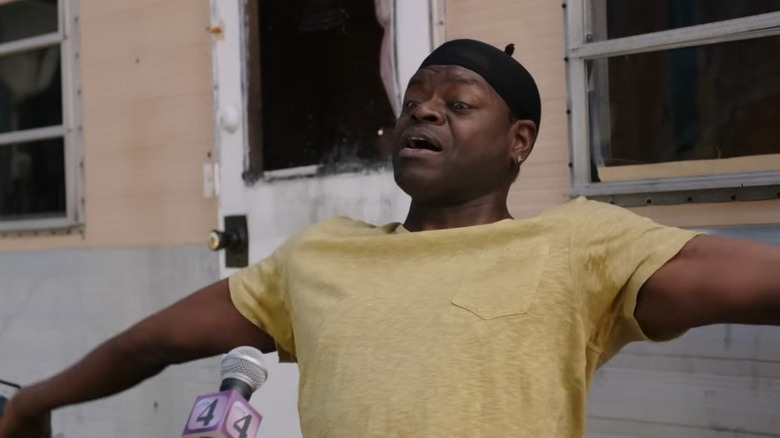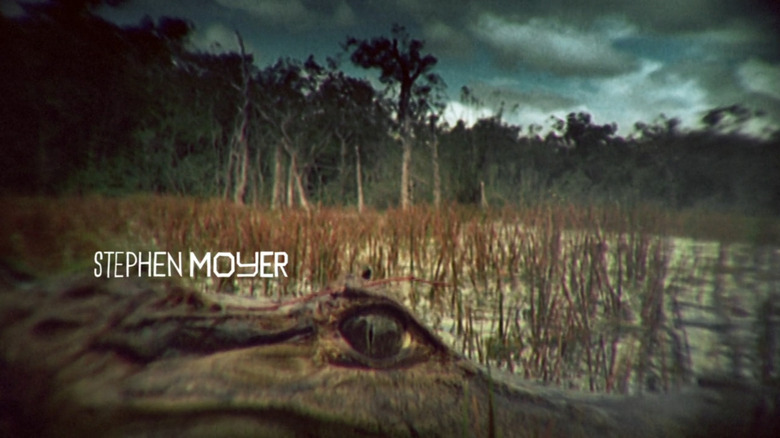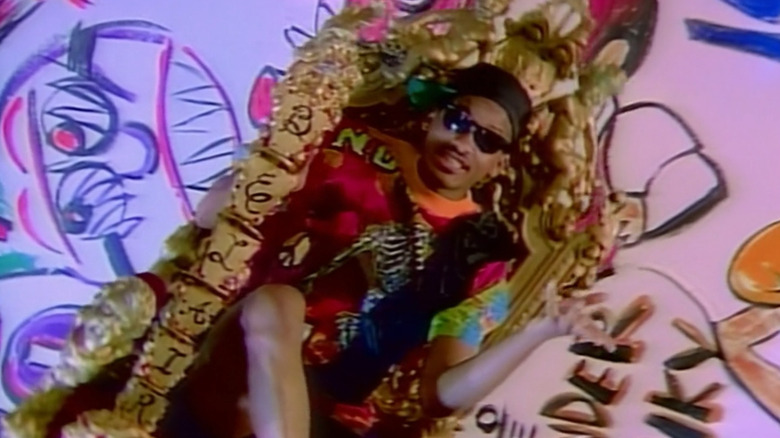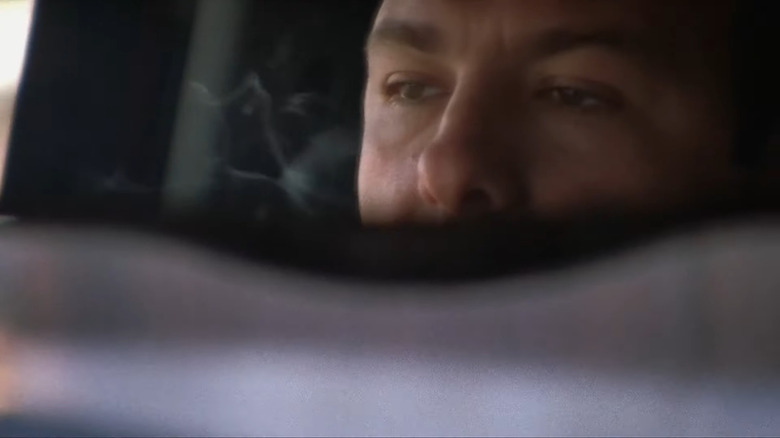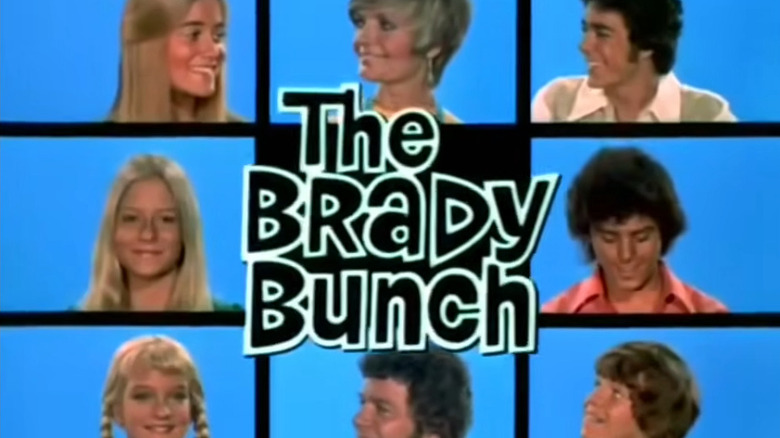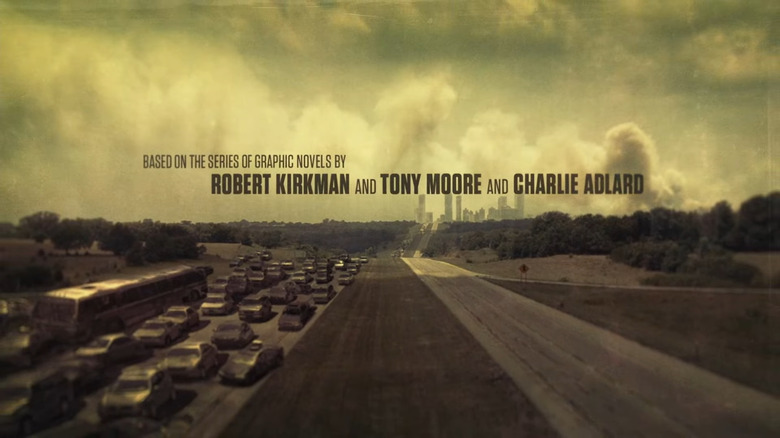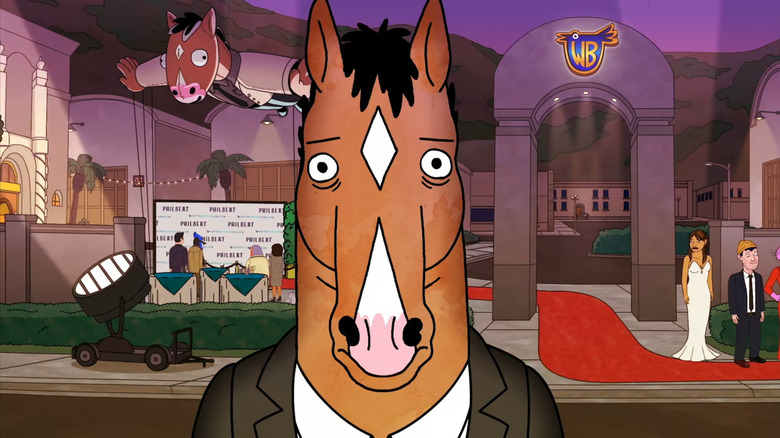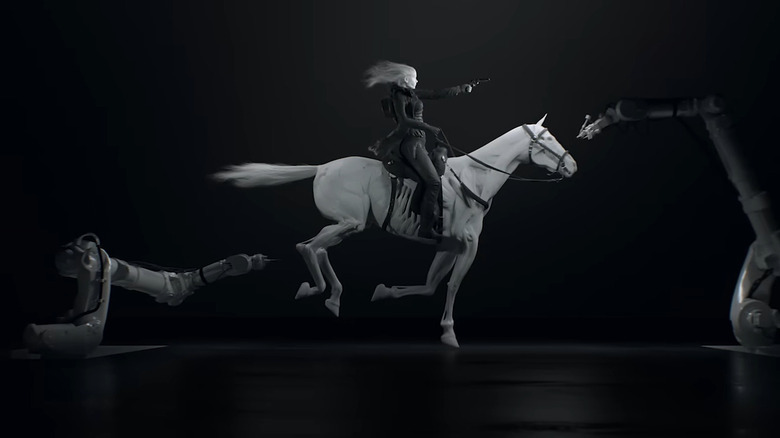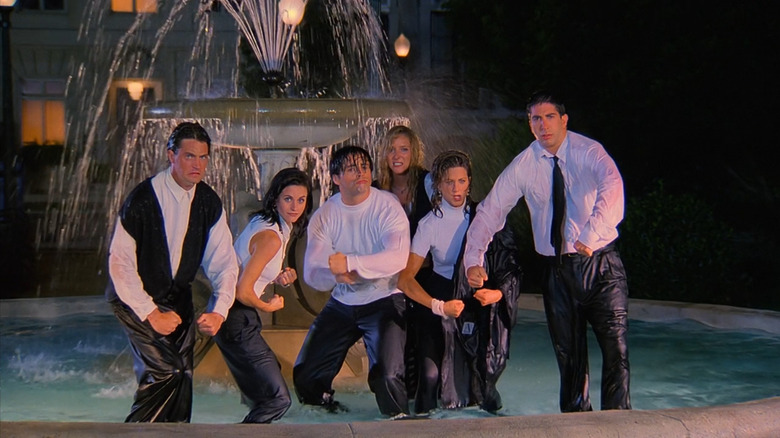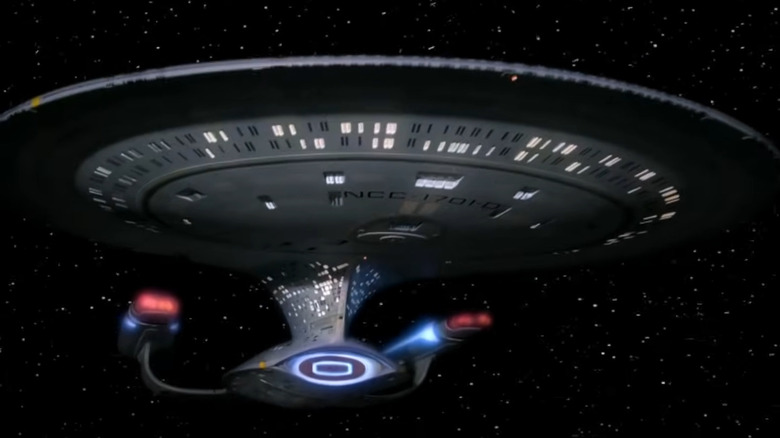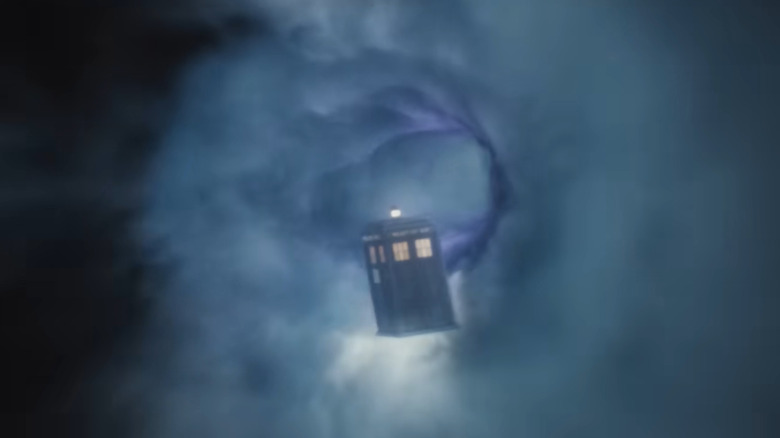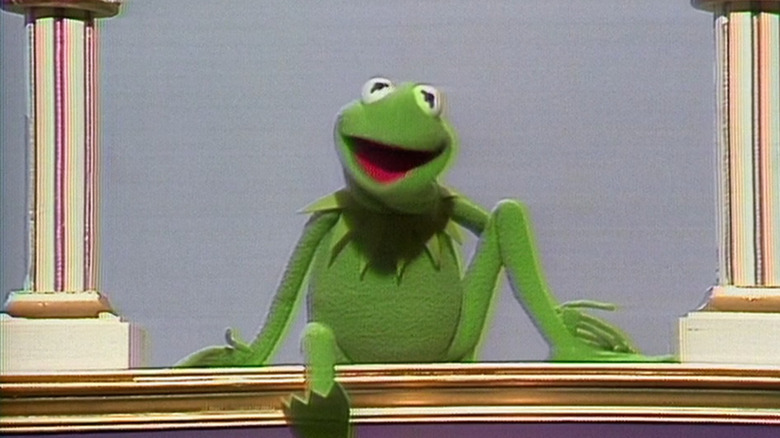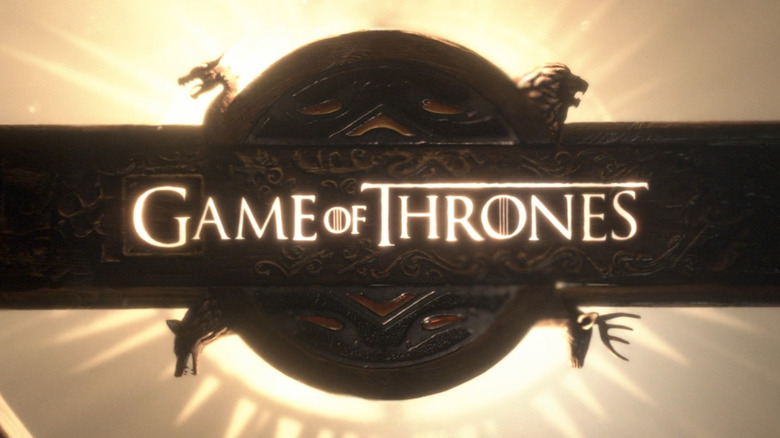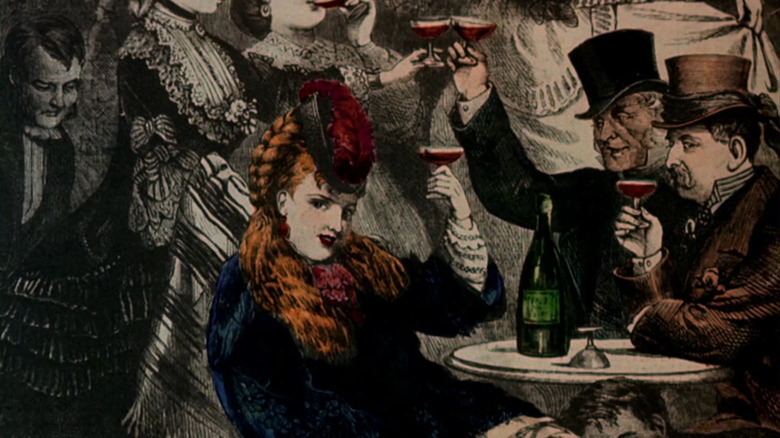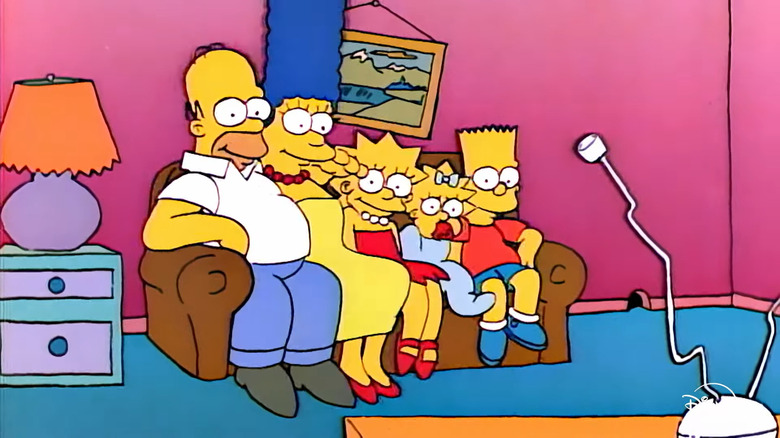The 15 Best TV Show Opening Credit Sequences Of All Time, Ranked
Since televisions began airing series, there have been some sort of opening credit sequence. Typically, these simply included the relevant names who worked on the show, but over time, credit sequences evolved. They started including catchy jingles or songs chosen specifically for whatever show is best encapsulated by them.
These songs and the short clips showing characters make up the bulk of TV show opening credit sequences throughout the 20th century. Of course, not every credit sequence is considered to be one of the best of all time. For a show to nab that little distinction, it needs to be innovative, add something previously unseen, incorporate memorable music, and depict images specifically relevant to the program.
When these elements all come together, you're left with some of the most memorable credit sequences ever made. There are truly hundreds of spectacular examples that could qualify, but this article is limited to the 15 best of all time. Each one shows the extra effort that went into making them terrific, and some of these songs live rent-free in our heads forever more.
Unbreakable Kimmy Schmidt
"Unbreakable Kimmy Schmidt" centers around the titular lead, played by Ellie Kemper. She and three women were kidnapped by doomsday cultist Reverend Richard Wayne Gary Wayne (Jon Hamm) and forced to live in an underground bunker for 15 years. The pilot kicks off with this reveal and shows authorities rescuing the women while a neighbor speaks to the press.
The series leans heavily into satirizing pop culture of all types, and this is never more apparent than in the intro. Jeff Richmond composed the earworm of a title bop, which lampoons internet culture in several ways. The news coverage of Kimmy's rescue is heavily auto-tuned, making a song of the broadcast that perfectly encapsulates what the show is all about.
Richmond spoke with Entertainment Weekly about the intro, explaining that he and executive producers Robert Carlock and Tina Fey "wanted it to live as an anthem — a song of empowerment, but with some humor." The intro, like Kimmy's outlook on life, is incredibly uplifting and offers a balance that renders it a masterclass in intro design.
True Blood
"True Blood" is a romance told with blood — it's all about vampires, werewolves, and other supernatural creatures, while its main character, Sookie Stackhouse (Anna Paquin), is relatively normal. Well, she's a telepath who's in love with a vampire, but is otherwise normal. The series kicks off each episode with one of the most visually disturbing intros of all time.
That's clearly the point creative director Matt Mulder was trying to make with the intro, which features a mishmash of iconic Southern religious iconography juxtaposed with depictions of death and literal rot. Mulder and his team wanted to balance the sacred with the profane.
This is helped by Jace Everett's "Bad Things," which uniquely manages to form the connective tissue of the underlying macabre imagery. In a time where people can skip the credits with the push of a button, "True Blood" offers a reason to watch them — the 90-second intro perfectly sets the mood of the entire series.
The Fresh Prince of Bel-Air
For most TV shows with a theme song, they're catchy tunes that become significant earworms over time. When Will Smith took the lead in "The Fresh Prince of Bel-Air," there was no chance the hip-hop artist wouldn't sing the intro song, and he came up with one of the most iconic tracks of the 1990s.
Not only is "Yo Home To Bel Air" a fantastic song, but it also details all of the exposition a viewer needs to know about the series. The song begins with Smith detailing where he grew up and how he got into trouble, requiring a move from Philadelphia to Bel-Air.
The song and intro sequence stood out because, for the most part, '90s sitcom intros weren't very creative. That can't be said of "The Fresh Prince of Bel-Air," which not only tells the audience the backstory but also shows it as well, and the imagery is humorous, bordering on slapstick. More than 25 years later, fans still can't get that song out of their heads.
The Sopranos
Few TV shows attain the level of popularity as HBO's "The Sopranos," which tells the story of Tony Soprano (James Gandolfini) and his family. Tony is a high-ranking member of the New Jersey mob, and the intro dives deeply into the setting by depicting iconic locations. On the surface, the intro is mundane, as it depicts Tony driving.
Tony leaves the Lincoln Tunnel, entering Jersey while smoking a cigar and looking around as he drives to his destination. This sequence accomplishes two things: It casts Tony in the light of a made man, and it also shows his connection to his hometown.
Tony drives to the Alabama 3 track "Woke Up This Morning," which is about taking what belongs to you, so it fits. Tony drives himself instead of having someone drive him, and there's a reason for this. The drive is akin to placing Tony in the eye of a hurricane as he leaves the city towards his home. Neither place is relaxing, but Tony somehow finds his own calm driving on the New Jersey Turnpike, which is telling in and of itself.
The Brady Bunch
If you want to make a Gen Xer burst out into song, all you need to do is say, "Here's a story ... of a lovely lady," and they'll have to finish the tune. Well, maybe not, but odds are, you're not going to find a fan of "The Brady Bunch" out there who hasn't memorized the intro song; that particular earworm lives rent-free in the heads of millions.
The intro literally tells the story of how the titular group came together. You've got a mom with three daughters and a dad with three sons. They become a family and show how perfect a blended family can be in the 1960s and '70s. Series creator Sherwood Schwartz wrote the lyrics, and it was initially performed by the Peppermint Trolley Company.
The singers changed to the show's kid actors, who were credited as the Brady Six, and their vocals remained throughout the rest of the series. Interestingly, the show's name and the song lyrics were initially about "The Brady Brood" to avoid confusion with "The Wild Bunch." Fortunately, the name was changed to the more familiar "Bunch" before it aired.
The Walking Dead
Few series put as much effort into their opening credits as "The Walking Dead." The series ran for 11 seasons, and one thing that remained consistent was how the credits evolved. Initially, the series title card features the logo that's a bit dirty. By the end of the show, that title decayed, like the walkers, showing blood and mold.
This is an ingenious way to show how the world is slowly falling apart, and the survivors are left to pick up the pieces. The same is true of the imagery depicted on the intro, which also changes over time. The "Walking Dead" opening credits are important for the show's narrative, as they play a part in showcasing the state of the world.
The series' theme music adds an element of nuanced dread that's nearly palpable for the audience as imagery shows a mostly dead world. The title changed significantly as the story developed, showing the world green once more as the survivors began to thrive. All of this helps set the stage for each episode's action and drama, making the intro particularly effective.
Bojack Horseman
"Bojack Horseman" opens each episode with a 40-second title sequence that beautifully establishes the series' themes. The show centers around the titular lead, played by Will Arnett, a washed-up '90s TV star who battles depression, alcoholism, and his own relevance in the world around him. It may seem like a cute TV show about an anthropomorphic horse, but it's nothing like that at all.
The title sequence begins with Bojack waking up in bed in his amazing house, keeping his face in the middle of the frame as he goes through his routines. The world happens behind him as he continues to look at the camera before falling backward into his pool as concerned guests look down. The sequence ends with Bojack resting casually in his pool.
The evocative imagery illustrates who Bojack is in the world, and the sequence changes throughout the series to reflect changes, good and bad, in Bojack's life. The sequence is subtle but also telling, and helps establish the series in a quick and relatable way. Each sequence conveys anxiety, addiction, and dysfunction without being overt, which grounds the series despite all the talking animals.
Westworld
There's an underlying theme in "Westworld" that nothing is necessarily how it appears, and this bleeds through into the opening title sequence. From the outset, the viewer is shown what appears to be a sunrise, only to find that it's a light over the creation of a rib cage. Each image that follows is similar, in that it could be two things, establishing the show as being symbolic.
The intro to "Westworld" is also subtle but continues in this manner, as the audience is shown the delicate and detailed work that goes into creating the series' android "hosts." Patrick Clair's opening sequence continues as an android's skinless hands play the music on a piano as the imagery changes.
The fabrication switches to a revolver, and in the background, Western imagery is juxtaposed with the creation of an eye. Finally, a near-complete android is shown in a Da Vinci Vitruvian Man pose, illustrating the show's theme of humans and hosts, neither of whom control their own lives. It's a brilliant exploration into the series' imagery and an excellent depiction of the human condition.
Friends
There are few TV shows that have permeated popular culture as effectively as "Friends." The show depicts the lives of six 20-somethings living in New York City as they deal with relationships, family, and work. It's one of those shows you either love or hate, and given how well it's done, more people love it than don't.
Each episode opens with an iconic intro that's pure '90s. As the "Friends" theme song, "I'll Be There For You," is performed by the Rembrandts, the audience sees the cast sitting together on a couch in front of a fountain. They play and dance about as the actors' names appear, though this changes in later seasons.
As the show continued, clips were inserted throughout to break up the imagery, and these changed as the seasons progressed. The song is as much a part of "Friends" as the cast, but it was almost entirely different. Initially, REM's "Shiny Happy People" was planned to open each episode. REM passed, so the producers turned to the Rembrandts, and they came up with the song that's been stuck in the world's collective heads since 1994.
Star Trek and Star Trek: The Next Generation
"Star Trek" is one of the most iconic science fiction TV series of all time, and it has an equally iconic intro. Each episode opens with Captain James T. Kirk (William Shatner) narrating the USS Enterprise's five-year mission: "To explore strange new worlds, To seek out new life and new civilizations, To boldly go where no man has gone before."
This is followed by imagery of the starship Enterprise moving about the galaxy with music composed by Alexander Courage. It's an amazing sequence that is all the more stunning when you consider that it was made in 1966. While the original series intro is amazing, it was one-upped by "Star Trek: The Next Generation" in 1987.
There have been many amazing Star Trek series opening credits, but "The Next Generation" is hard to beat. It takes Kirk's words from "Star Trek" and modifies them for a new generation. Tweaks include making the mission continuous, and the mission to boldly go was changed to "where no one has gone before." The additional imagery with updated graphics and music is a standout among the franchise's many intros.
Doctor Who
"Doctor Who" has been around for a long time, having first aired in 1963. While the series didn't continue uninterrupted, "Doctor Who" has aired either new episodes or reruns since its inception. Because the main character can and has been played by multiple people, there's a lot of "Doctor Who" out there.
This makes it difficult for new viewers to start watching "Doctor Who," but one doesn't need to watch all of the episodes to follow the series. Each episode kicks off with an intro that is typically modified from one season to the next. Either that or the intro is altered to suit a new Doctor — either way, the "Doctor Who" intro has changed more than a dozen times over 60+ years.
Each sequence is different, beginning with the first season's camera pointing to its own monitor and progressing with images from the series. Many later intros feature clocks or other depictions of time passing, aligning with the show's time travel theme. The TARDIS is often seen cruising through a magical vista of abstract imagery as composer Ron Grainer's iconic title music draws viewers in for more.
The Muppet Show
It took Jim Henson a long time to get "The Muppet Show" produced, and when he finally managed it, he gifted the world with something truly special. The variety series was nothing like what came before, and there hasn't been anything comparable since. "The Muppet Show" opens with a grandiose song and dance number performed by dozens of Muppets, and it's incredible.
Each episode kicks off with Kermit (Henson) sticking his head through the O in the title card. He welcomes everyone to the show and announces the guest as everyone's favorite Muppets go through the song, "The Muppet Show Theme," and it's exciting and fun. The song ends with Gonzo smashing a gong that sends him vibrating horribly.
As the series continued, the intro received some upgrades, allowing for more Muppets to sing and dance, though the lyrics remained pretty much the same. Given how challenging it is to feature so many Muppets, the unseen puppeteers must have worked tirelessly to put it all together. Of course, the song is memorable, and it's one of those TV show theme songs that persists in pop culture decades after airing.
Game of Thrones and House of the Dragon
George RR Martin's "Game of Thrones" and "House of the Dragon" are two of the most popular television series ever produced. Each show is stuffed with detailed lore, excellent characters, and gorgeous settings, and a lot of it went into the title sequence. In both series, the title sequence tells the story so far, depicting house crests or other images relevant to the narrative.
For "Game of Thrones," this was accompanied by Ramin Djawadi's dramatic score as locations are displayed through detailed animation. The sequence came together because, after shooting the pilot, it was clear there was some confusion over the many locations and houses. The credits sequence solves that problem by showing what's going on in the show, and it changes over time.
The "House of the Dragon" opening credits follow suit, and like its predecessor, it depicts the characters, houses, dragons, and locations as the series progresses, opting for a tapestry as its backdrop. Each show does this differently, but despite their different imagery, they accomplish the same goal, resulting in two stunning opening sequences that truly stuck the landing.
Cheers
The 1980s were dominated by NBC's programming, and one of the biggest shows of the era was "Cheers." The show was unusual for the time, as it's set in a bar and rarely changes locations. The characters are a mix of employees and patrons, many of whom spend their nights in the bar. At a time when most sitcoms focused on the family, "Cheers" went for something different.
Each episode opens with what is arguably one of the most iconic opening sequences and songs of all time. The show's theme, "Where Everybody Knows Your Name" by Gary Portnoy, perfectly frames the place: "You want to go where everybody knows your name, and they're always glad you came."
Instead of showing the actors as their names flash on the screen, imagery from old-time paintings and pictures. It's an interesting juxtaposition, especially after you've watched an episode or two and seen the characters. The sequence changed after some cast members left, but on the whole, "Cheers" maintained the same theme in its opening credits throughout its 11-season run.
The Simpsons
Of the thousands of television shows with opening credits, none are as enduring as "The Simpsons." The opening sequence is iconic, as it shows different areas in Springfield and introduces the characters going about their day. Each episode features several changes, including Bart's (Nancy Cartwright) writing on a chalkboard, Lisa's (Yeardley Smith) saxophone solo, and the famous "Simpsons" opening couch gag.
The couch gag is probably the intro's most enduring aspect, as it's what closes out the sequence. Since it began airing in 1989, more than 760 episodes have featured alterations to the intro, which is impressive. On top of the animation, each sequence features the show's unforgettable music, "The Simpsons Theme," composed by Danny Elfman.
The intro evolved over time, inserting new elements while removing others and recreating all of the animation. There are so many episodes that it's almost impossible to choose a favorite couch gag or opening scene. Regardless of a fan's preference, there are hundreds to watch, and each builds upon the success of those that came before, making the "Simpsons" opening credits the best of them all.
